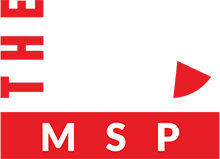
The Break-In: 7 Layers of Cybersecurity Protection
Picture this: you’re a thief choosing a house for your next heist. You have two potential targets. One house is surrounded by a barbed wire fence, outfitted with an entire suite of cameras, and home to several snarling guard dogs. The other has nothing more than a locked door. The choice is simple. Why deal with multiple security systems when you can deal with one? Cybercriminals follow this same thought process.
These days, one layer of protection doesn’t cut it. Antivirus software alone won’t save you from the increasing threat of cyberattacks. As the secured house example shows, a layered approach to cybersecurity can complicate and, ultimately, deter a cyberattack. Below, we are going to review seven layers of protection a cybercriminal may (or may not) face. Used together, these layers of defense radically reduce your risk of becoming some cybercriminal’s next victim.
1. Human Layer
You approach your target when suddenly the front door opens. The owner smiles, waves, and lets you inside, oblivious to your plans of thievery. This is a breach of the first layer of security – the human layer. According to Verizon’s 2023 Data Breach Investigation Report, 74% of all breaches include the human element, and 50% of all incidents involve some form of social engineering.
Getting this layer up to snuff is extremely important and requires security awareness training, strong passwords, and multi-factor authentication. With proper training, your employees can stop potential threats before they start. You can read more about the human element of cybersecurity here.
2. Perimeter Layer
Okay, the owner isn’t going to let you inside. Instead, they’ve erected a barbed wire fence to keep you out. This is the perimeter security layer. This outermost layer of cybersecurity consists of firewalls, spam filters, intrusion detection systems and VPNs. Together, these systems control the traffic coming and going from an organization. Although it is one of the most effective layers, a single breach can make its existence moot, which is why it’s crucial to have additional layers of protection…
3. Network Layer
You manage to get over the fence without notice. You’re expecting easy money, but as you step into the yard, the next security layer appears. A massive hedge maze separates you from your loot. You wander and wander, hitting dead end after dead end. You can’t seem to make any progress. By then, the police are on their way, and your goose is cooked.
This is the network layer. This layer directs and controls the flow of communication between devices on a network and holds information as it travels between locations. It can prove a tantalizing target for a cybercriminal data interception. Like the hedge maze, network security works to
keep data safe through misdirection and isolation. Encryption is a common tool here.
4. Endpoint Layer
You must be one gifted thief (or hacker) because you did it. You bypassed the perimeter and the maze, and now, you’re looking for the goods. In a cyberattack, the goods are your endpoints. An endpoint can be a computer, server, phone, etc. Anything connected to your network is considered an endpoint. You creep down the hallway and notice the security camera.
This is where antivirus software (AV) comes into play.
You can think of antivirus software as the alarm system protecting your precious data. Much like a security system alerting the authorities, antivirus works to monitor, detect, and remove any viruses. Much like perimeter security, AV software does great most of the time, but it can fail, and when it does, we can all be happy we’ve got additional layers in place.
5. Application Layer
Cameras avoided, you find the electronic safe begging to be cracked. You set up your tools for the break-in, but something isn’t right. Nothing is working. This safe is locked down. Its lock is fortified, the casing is bulletproof, even the keypad isn’t responding. You’ve come up against the application layer.
Application security focuses on, you guessed it – applications. Think of each application as a different aspect of your endpoint. Like a thief cracking a lock, or prying open a faulty hinge, these cybercriminals work through the cracks left by application vulnerabilities. Through regular updates, patching, and security scanning, applications are kept up to date to minimize these vulnerabilities. Patch management is vital for the health of your entire system.
6. Data Layer
Click. The lockbox swings open. You managed to break through and pull out your loot and…wait a minute. It’s impossible to read! Not another layer of security, you groan. Welcome to layer six, the data layer.
By converting your critical data into a coded format, encryption secures your confidential information by preventing unauthorized access. With proper encryption, your hard drive has a lower risk of compromise, and data stays that much safer. Backup solutions are also an important part of this layer, ensuring data recovery in case something does get stolen or deleted.
7. Final Layer: Mission Critical
It took far longer than you’d hoped, but somehow, you decoded your haul. The treasure is in your hands, and boy, oh boy, did you hit the jackpot. You’re about to pocket the goods when an alarm blares. The windows seal shut. The authorities break down the door. You’re suddenly up against a disaster recovery team, whose job is to implement and execute the seventh layer of cybersecurity – the mission critical layer.
Maybe a life of crime isn’t worth it after all.
The mission critical layer involves almost every aspect we’ve talked about rolled into one. We’re talking firewalls, patching applications, data recovery and more. This entire layer revolves around your company’s disaster recovery plan (you have one of those, right?). This means that it is
inherently preventative, with action items planned and organized for when things do go south. This is all to ensure the smooth recovery of your most sensitive data, essential hardware, proprietary software, and whatever else is of vital importance to your business.
No Compromises
In this day and age, there’s no getting away with a single layer of cybersecurity. Cybercriminals are good at what they do – hacking systems is their job, and they use every resource at their disposal to do it well. That’s why these digital troublemakers have already cost the world trillions of dollars – and it’s why a multi-layered approach is non-negotiable.
Need help layering your business’s cyber defenses? We’ve got you covered! Schedule your call with The 20 today.



